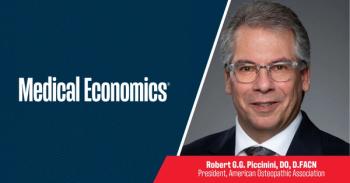
Health care in transition: Trends shaping 2025
How technology and policy will redefine care.
Health care stands on the brink of transformation in 2025, poised between the enduring promise of value-based care and the accelerating integration of innovative new technologies. These forces, alongside an uncertain political landscape, demand a recalibration of priorities to ensure that progress remains sustainable, equitable and impactful. As the industry adapts to these shifting dynamics, the unifying thread is a focus on balance — between innovation and regulation, ambition and practicality, and payers and providers.
However, 2024 underscored critical challenges to value-based care. The Centers for Medicare & Medicaid Services (CMS) achieved favorable results with the introduction of the new hierarchical condition category V28 risk adjustment model, which was updated to better assess patient health conditions and accurately predict health care costs to determine payment rates. But at the same time, many providers found themselves grappling with financial strain. This misalignment threatens the viability of value-based care unless addressed. The path forward lies in ensuring that financial incentives align with shared goals, and all stakeholders bear proportional risk and reward.
The future of value-based care cannot be considered in isolation from the political environment. In 2025, the new administration’s approach to health care reform adds a layer of uncertainty. The Affordable Care Act (ACA), which has underpinned much of the value-based care movement, faces pivotal tests with the expiration of subsidies. These provisions catalyzed adoption by embedding quality measurement and risk-adjusted capitation payments into the fabric of care delivery. Can the private market sustain this momentum independently, pushing the industry toward self-regulation and wider adoption of value-based principles? Amid potential disruptions, the imperative to preserve this model’s progress remains clear. Value-based care remains one of the few sustainable paths forward for an overstretched health care system.
As the industry grapples with these systemic challenges, technology emerges as both a disruptor and an enabler.
The fragmented nature of patient data remains one of the most significant hurdles. Information is scattered across incompatible systems and varied formats, limiting its usefulness in clinical decision-making. This lack of interoperability has long stymied progress, creating inefficiencies that undermine care. AI’s success in the years to come will depend on its ability to transcend these barriers, transforming scattered data into cohesive, clinically relevant insights. Rather than overwhelming providers with more information, AI must help distill and contextualize it, reducing cognitive burden and enhancing decision-making. This shift — from data overload to data empowerment — will be critical in realizing AI’s full potential.
Regulatory murkiness is another obstacle that must be navigated. While clinical AI is undergoing rapid innovation, a lack of clear guidelines creates uncertainty, leaving organizations to operate in a grey area. Striking the right balance between fostering innovation and ensuring patient safety is essential. Missteps could stifle progress or, worse, erode trust in the technology. As 2025 unfolds, regulators and innovators must work together to craft frameworks that encourage responsible AI adoption without curbing its transformative potential.
One of the most exciting frontiers for AI lies in its capacity to integrate multiple data modalities — speech, text, images and sensor outputs from medical devices. This approach unlocks revolutionary opportunities for precision medicine. By synthesizing diverse data streams, AI can provide a comprehensive picture of a patient’s health, enabling treatments tailored to individual needs with unparalleled accuracy. Beyond precision medicine, this approach enhances diagnostics, reduces errors and creates a more holistic understanding of patient care.
The integration of AI into clinical workflows is not just a technical challenge but a cultural one. For decades, clinicians have been inundated with tools that promised efficiency but often added complexity — and seemingly endless clicks. The solutions that will thrive in 2025 are those that seamlessly blend into existing workflows, enhancing the clinician-patient interaction rather than detracting from it. Ultimately, technology must serve to amplify the human aspects of care, empowering providers to focus on what truly matters: the patient.
At the intersection of these vectors — value-based care, administrative uncertainty and technological innovation — lies a health care system in flux. The common thread is the need for balance. Aligning the interests of payers and providers, harmonizing regulatory frameworks with technological ambition, and ensuring that innovation enhances rather than disrupts care are imperatives for the future.
As we look ahead, the stakes are clear. Health care’s evolution in 2025 and beyond will not be defined by any single innovation or policy shift but by the industry’s ability to integrate these elements into a cohesive whole. This integration requires not only technical ingenuity but also a shared commitment to collaboration and equity. By embracing these complexities with clarity and purpose, the health care system can chart a course toward a future that is not only more efficient but also more human.
Ronen Lavi is the CEO and co-founder of
Newsletter
Stay informed and empowered with Medical Economics enewsletter, delivering expert insights, financial strategies, practice management tips and technology trends — tailored for today’s physicians.








